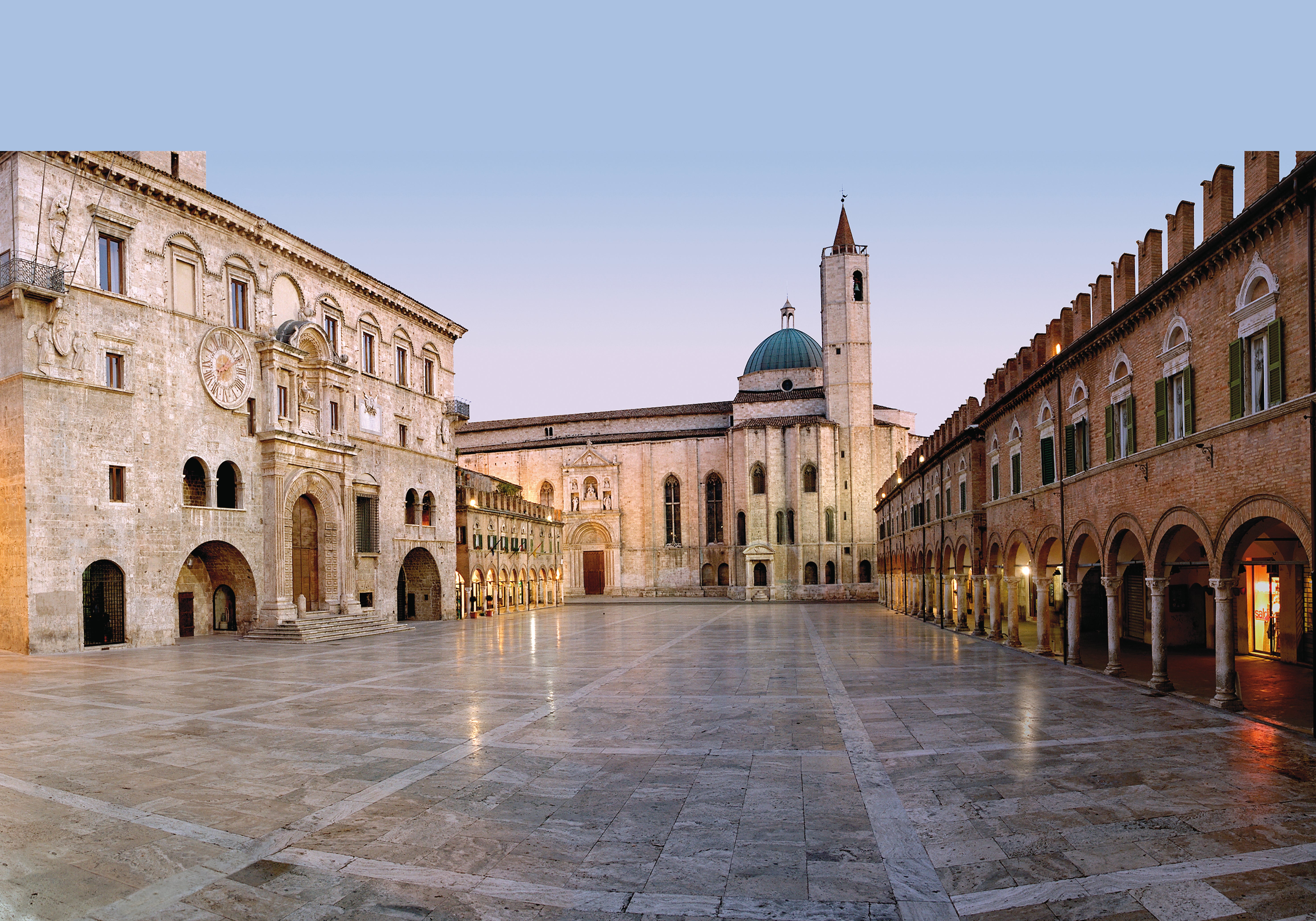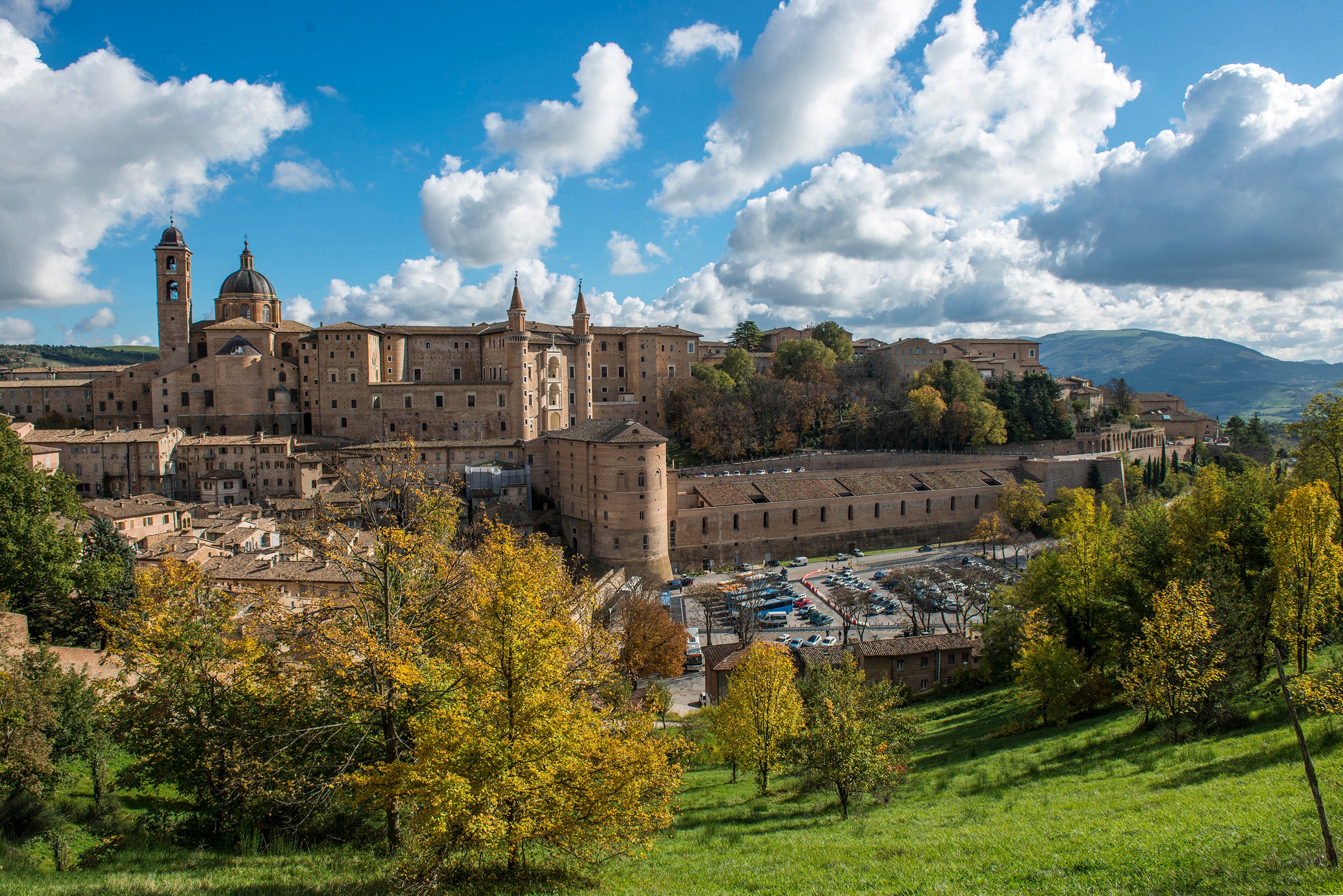Why Le Marche, Tuscany’s overshadowed neighbour, remains Italy’s under-the-radar renegade
From its coastline to its peaceful inland mountains, Chris Allsop finds a region of Italy still (mostly) unmediated by the tourist gaze

Your support helps us to tell the story
From reproductive rights to climate change to Big Tech, The Independent is on the ground when the story is developing. Whether it's investigating the financials of Elon Musk's pro-Trump PAC or producing our latest documentary, 'The A Word', which shines a light on the American women fighting for reproductive rights, we know how important it is to parse out the facts from the messaging.
At such a critical moment in US history, we need reporters on the ground. Your donation allows us to keep sending journalists to speak to both sides of the story.
The Independent is trusted by Americans across the entire political spectrum. And unlike many other quality news outlets, we choose not to lock Americans out of our reporting and analysis with paywalls. We believe quality journalism should be available to everyone, paid for by those who can afford it.
Your support makes all the difference.There’s a bear about. It’s crossed north from Italy’s ursine-blessed Abruzzo region into Le Marche’s rugged stretch of the Apennines. Perhaps it’s mulching oak leaves underfoot somewhere deeper in the Monti Sibillini National Park than where I’m currently hiking with my guide, Federica. The Marchigiani keep mentioning this bear, hopeful that it’ll be a female and settle here.
However, it might prefer Tuscany, to the west. Perhaps it’s read those perennial articles positing that Le Marche could be “the next Tuscany” but desires a sure thing. But if it does plunge east, through crooked orchards of resurrected apple varietals and crops of amethyst saffron, it could enter Marche’s verdant hinterland, the topography characterised by those brick hill towns the color of ageing parchment and dried blood that recall Tuscany for so many.
But it’s unlikely to reach the region’s east coast, where, beside the topaz blue of the Adriatic, the last wild-grown “moscioli” mussels of the season are served with glasses of chilled verdicchio. The E55 highway seals off the hinterland from the coastal high-rises awaiting next summer’s Italian staycation deluge.

In the mountains, 2,000 odd-feet above those sea-view tables, brilliant blue fills the narrow sky above the Gola dell'Infernaccio. Apparently, this area sees a “second spring” in the autumn, when temperatures, like today in mid-October, touch 20C (although in the night I still feel compelled to wrest the spare blanket from my bedside cabinet). Despite the daytime warmth, the air still feels like autumn in the dripping recesses where we walk, the shallow River Tenna rushing past in its bed of beaten silver.
With beech leaves forming a golden mosaic overhead, Federica retells regional myths of the prophetess Sibyl, who lived in a mountain cave, and her goat-hoofed maids dancing the saltarello with the shepherds by moonlight.
“Once they stayed out too long,” Federica relishes in telling me, “and when the sun rose they rushed home scouring a crack in the earth.”
In the mountains, 2,000 odd-feet above those sea-view tables, brilliant blue fills the narrow sky above the Gola dell’Infernaccio
Cracks in the earth loom large in the imagination here. A series of quakes in late 2016 caused devastation across regional lines. An hour’s drive east in Ascoli Piceno, its patron saint Emidio is tasked with preserving this travertine city from seismic ruin.
Unfortunately, miracles are the exception rather than the rule. Metal girders brace the medieval towers that earned this rich upstart a reputation as a Renaissance-era Manhattan (and, yes, comparisons with the Tuscan town of San Gimignano). So powerful were the quakes, that the façade of the masterpiece-stacked Pinacoteca Civic was shaken loose from the main structure.
As Federica and I rest beside an abandoned hermitage, I ask her why – with timeless hill towns like Fermo, stand-out seaside resort-villages such as Sirolo, Renaissance Urbino, and even Castelfidardo, the wheezing wellspring of the accordion – she thinks Marche hasn’t reached Tuscany’s level of foreign tourism.

“These are conservative people,” she replies thoughtfully. “They’re afraid of what might be taken from them.”
One can’t avoid an historic irony here, when the Marchigiani were the ones taking things from the citizens of 16th-century Rome. Outsiders brought in as tax-collectors, they were steadfastly loyal to their homegrown, corruption-fighting Pope Sixtus V.
“They would say, ‘better a dead man in your house than a Marchigiani at your door’,” Fabrizio, my snowy haired waiter at La Fonte di Mose in Torre di Palme proudly tells me.
The morning after my hike, in a stylish B&B called Borgofortino, I spoon a breakfast of creamy goat’s ricotta glazed with local honey. This rural cottage restoration project was nearly abandoned by co-owners Sergei and Michela when the earthquake hit. And then the punchline: they opened in 2019. Still, they managed to survive a pandemic; and if they can do that, they can surely make it through anything.

Refuelled, I drive two-and-a-half hours north to Urbino, the walled city that’s often compared to Florence or Siena. It is less cluttered with masterpieces and mankind than that Tuscan twosome. The birthplace of Renaissance painter Raphael, Urbino is an MC Escher sketch of vertiginous wine bars and unexpected, luminous works of medieval art. Students scatter like leaves through this university town’s windy streets while the restaurants dare to serve bolognese delicacies beside bowls of stout Marchigiani pasatelli, the pasta hidden beneath pungent shavings of black truffle.
My final evening is spent in Ancona, the region’s capital and the entry and exit point for travellers into the area since the ancient Greeks. It’s a city with a long history, but today its regal centro storico slumbers before the electric fire of its cruise port.
Walking away from the tinny techno and diesel and garlic reek of the centre, I locate, in a grand palazzo on a deserted street, the National Archaeological Museum of the Marche Region. Among its relics is a jug dating back to the Picenes, the Marche’s first people. Its bottom half is an engraved ostrich egg pieced back together having been shattered by an ancient aftershock or the Romans when they shattered this civilization.
Urbino is an MC Escher sketch of vertiginous wine bars and unexpected, luminous works of medieval art
But another exhibit stops me in my tracks. Boxed in glass and brightly lit is the petite skeleton of a prehistoric female bear.
In Ascoli Piceno, the Florentine museum director proclaims: “The Marchigiani do not appreciate the beauty of their own region”. But I think, rather, they have become too well acquainted with its fragility. Instead of throwing open their arms, they’re waiting for you to come and piece it together.
Travel essentials
Getting there
Trying to fly less?
Travel on the Eurostar from London to Paris, from where there’s a TGV/Inoui high-speed train to Milan that takes seven hours. There are then regular trains to Ancona, with a high-speed direct service taking from just under three hours.
Fine with flying?
Ryanair flies regularly to Ancona from London Stansted.
Join our commenting forum
Join thought-provoking conversations, follow other Independent readers and see their replies
0Comments